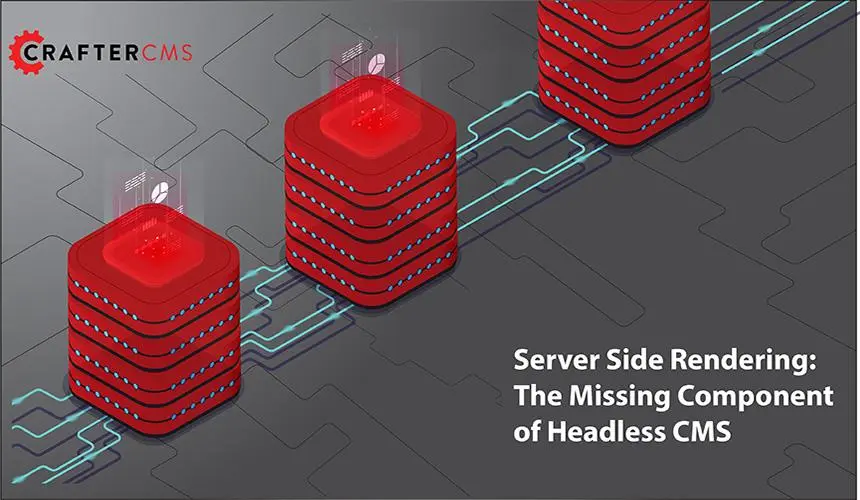Structured Content in a Headless CMS

Amanda Lee

Modern enterprises have demanding content requirements. They need content to engage and entice potential buyers and turn them into lifelong customers. That content must also be personalized and relevant no matter what channel customers hope to connect with your brand.
Structured content can make that a possibility.
This blog post will explain structured content and how it can be used in a headless CMS to elevate content operations and deliver what customers need.
What Is Structured Content?
Structured content is broken down into its smallest component parts, known as fields or chunks. By breaking down content this way into bite-size chunks, content can be separated from the presentation format so that it can be easily organized and reused across any interface.
For example, a blog post like this one can be broken down into different components (title, headings, date, keyword tags, body paragraphs, author, etc.). This accomplishes two things. First, machines can easily read and understand the content, and second, it can be presented and repurposed as an FAQ page, or something else entirely.
Structured Content vs. Unstructured Content
Structured content provides predictability, which allows it to be used on any interface. Content doesn’t have to be restricted to being a landing page but can be repurposed into an asset for a digital kiosk or presented in any format for any channel that the business requires.
Unstructured content, however, only restricts what businesses can accomplish with content. The rigid approach of unstructured content allows content to be used for a single use case but is not easily adapted.
Blog posts can benefit from structured content and make things easier for content authors as they don’t need to recreate everything every time. However, in many cases, blog posts can be reduced to a body of text and images, which doesn’t enable companies to achieve the full benefits of structured content. Yet the difference is felt when attempting to deliver multichannel digital experiences.
For example, a product page for an eCommerce store doesn’t only need to remain a page to be accessed on a desktop. Since structured content treats content as data, that same content data can be fed to other locations, such as a digital marketplace or a digital assistant like Amazon Alexa.
Unstructured content would force you to create an entirely new asset from scratch each time. Whereas with structured content, tweaks can be made, and content can be adapted for other use cases.
Why Should Structured Content Matter to Enterprises?
Large enterprises, in particular, have numerous content requirements that span multiple audiences and use cases. This can strain content teams incredibly as they attempt to keep up with new channels, changing customer preferences, and various other challenges.
Structured content can help to alleviate some of this pressure by increasing the efficiency and productivity of content teams. It makes editing content more straightforward and allows brands to launch more innovative content experiences. Plus, there are also numerous benefits of structured content.
Benefits of Structured Content
Reusability and Efficiency
Structured content promotes reusability by creating a structure for different content types and use cases. For example, using content modeling, you can create a structure for blog posts or case studies on your website. Those content models can then be used whenever you want to build a new blog or case study, and you won’t need to reinvent the wheel each time.
With structured content, brands can use COPE - create once, publish everywhere. Content can be created for one channel and published for another just as easily. It can also reduce errors and duplicate content as content can be updated in one area, and those edits are quickly pushed to anywhere else that content has been published.
Better Consistency
The predictability of structured content gives brands more control over what their content will look like. Content teams don’t need to worry that content published on their website will look different from the content on their mobile app. That consistency enables brands to quickly launch omnichannel campaigns that not only publish content to different channels but also ensure that the quality of content, branding, and style guidelines are always followed. Ultimately, this provides the seamless experience that customers look for today when they toggle between different channels throughout their buying journey.
Discoverability
Structured content is easily discoverable. Content is treated as data and tagged with unique metadata so it can be easily classified. This allows content authors to find a piece of content when they’re looking for it and for users to navigate to the right content on your website or whatever channel they’re browsing.
Discoverability is also a massive benefit to SEO rankings since content data can be easily crawled. Search bots can quickly understand what they will find on a website or within a piece of content and index it accordingly, which makes it easier for them to recommend that piece of content when a user searches for it.
Productivity
Another significant benefit of structured content is that it boosts content team productivity. Content authors can more easily organize content and don’t have to waste time creating new pieces of content from scratch each time.
Personalization
The reusability of structured content also makes it a valuable tool for achieving personalization. Brands can quickly and easily create content at scale, allowing them to meet the content requirements to experiment with different channels and personalize or localize content for different use cases and audiences.
Implementing Structured Content with a Headless CMS
In order to implement structured content, enterprises need a content management system that enables them to publish content without focusing on where it will be published. A headless CMS provides the flexibility to deliver content to multiple channels and the content modeling capabilities to structure that content accordingly.
CrafterCMS is an enterprise-grade headless CMS that offers exactly what organizations need to launch content experiences faster, and implement structured content while empowering content authors and developers with the tools they need to create those experiences in the first place.
Headless: CrafterCMS’s headless architecture enables businesses to decouple content from the presentation layer. Content can be delivered to any channel, whether a website, mobile app, VR headset, or smart car interface.
Content Modeling: CrafterCMS offers robust and flexible content modeling tools and capabilities to structure content as needed to enable consumption by those various devices. Content models can range from fully structured to semi-structured or loosely structured, allowing content creators to exercise their creativity as desired or adhere to restrictions as necessary.
User-Friendly Content Authoring: Content authors can access a visual content authoring interface with drag-and-drop experience building and WYSIWYG content editing. This enables them to avoid 95% of content bottlenecks that might occur with other headless CMS solutions.
Framework-Agnostic Development: Developers can build experiences for any channel using their preferred frameworks and tools, including React, Angular, Vue or Freemarker (HTML templating) on the frontend, and Next.js, Nuxt.js, Node.js, Java/Spring, or Groovy on the backend. And they get this flexibility without compromising the WYSIWYG content authoring experience for the business users.
Structured content can be useful in meeting the content management demands of today. Having a CMS that supports it is also essential when building and delivering content-driven digital experiences. Discover why a headless CMS like CrafterCMS should be on your shortlist of CMS tools by reading our White Paper: Seven Reasons Why CrafterCMS Should Be On Your Web CMS Shortlist.
Related Posts

Building Custom Plugins for a Composable CMS

Amanda Lee

Navigating the Future of Digital Experiences: A Deep Dive into Emerging Trends

Amanda Jones

Building Personalized Digital Experiences for a Cruise Liner

Sara Williams

CrafterCMS Wins More G2 Awards Spring 2024

Amanda Lee










